



Whose seed smarts will get you all lined up for winter feed?





Whose seed smarts will get you all lined up for winter feed?
We know that Kiwi farmers rely on fast growing, reliable winter pasture. That's why we're working with industry-leader Cropmark Seeds. Their high-performance grasses combined with our soil expertise can help you get better livestock performance – and a stronger bottom line.
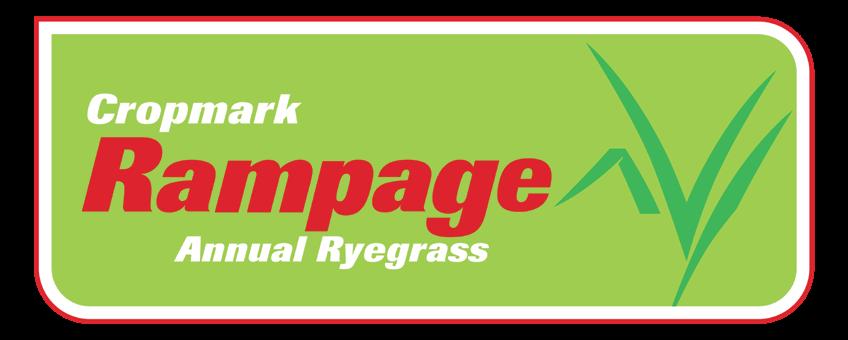
Very fast winter feed. Highest total yielding annual ryegrass in NFVT® trials. Rampage topped National Forage Variety Trials (NFVT®) for annual ryegrasses in the 2023-2024 summary. It has extremely fast establishment, with strong winter/ early spring production, rapid re-growth after grazing, and an ability to maintain high productivity and persistence into summer.
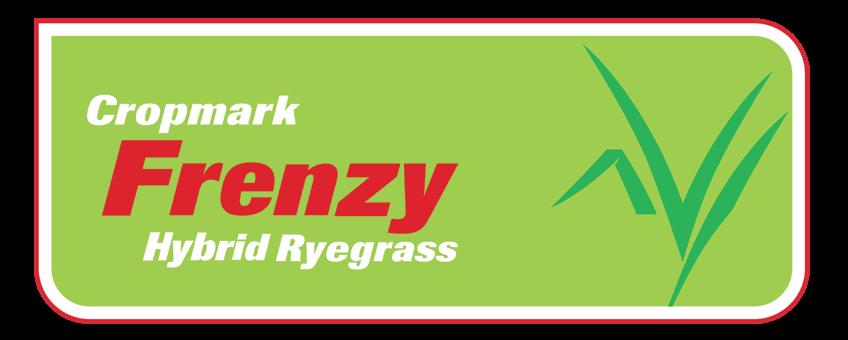

The over-sowing specialist.
Frenzy is a very high yielding hybrid (short rotation) ryegrass which performed exceptionally well in the NFVT® Italian ryegrass 2023-2024 trials. Its very fast establishment makes it ideally suited for stitching into old or run-out pastures.
Faster, high yielding winter feed.
A rapidly establishing late heading tetraploid annual ryegrass, with superior speed of establishment, cool season performance and excellent pasture quality. Ideal as a short-term specialist winter feed. Available exclusively through Ravensdown.






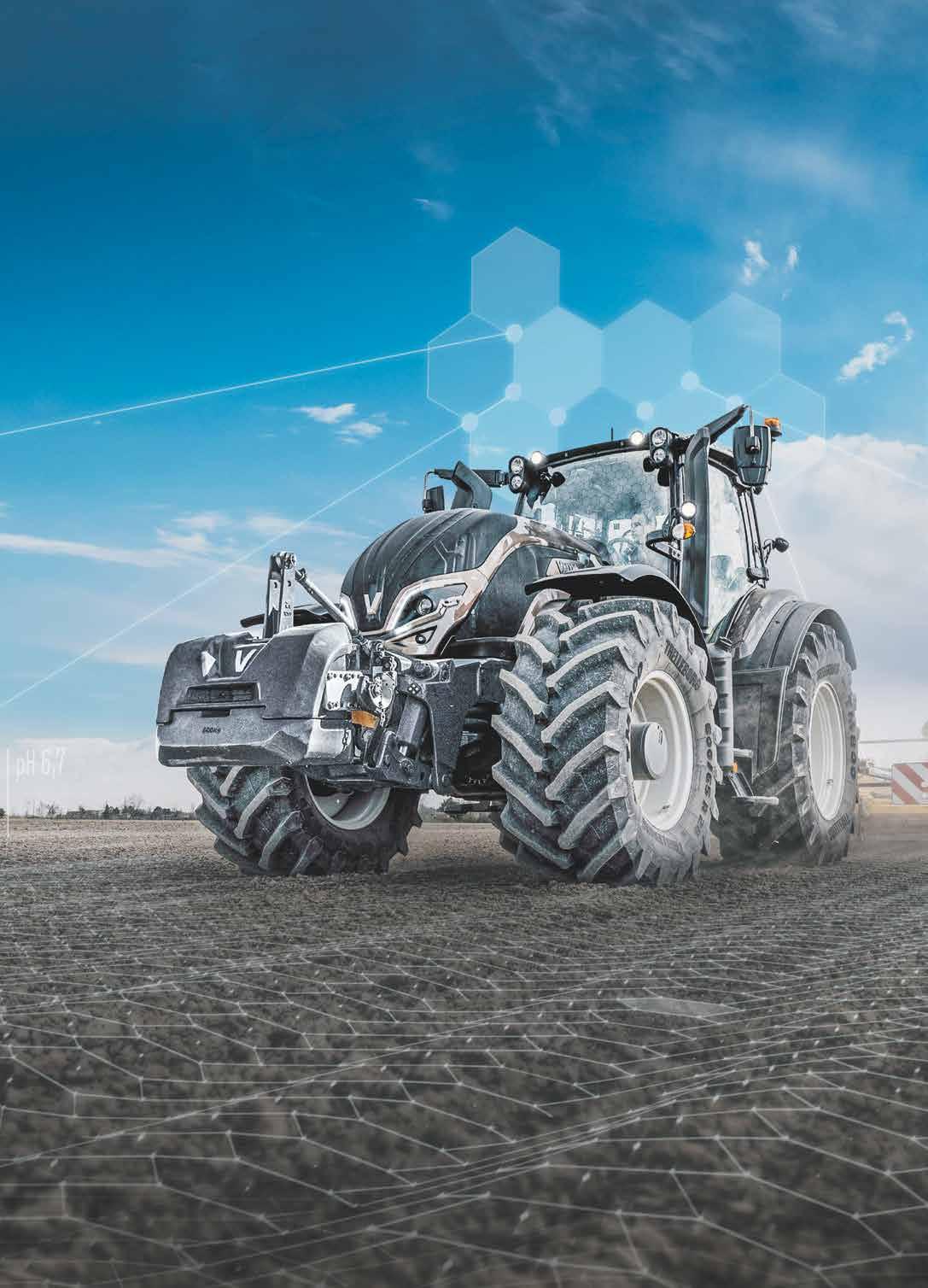



THE GOVERNMENT is calling on the country’s largest pastoral farmer, state-owned Pāmu (Landcorp), to lift its game.
Minister for State Owned Enterprises Paul Goldsmith has told Dairy News that he’s not happy with Pāmu’s performance.
However, he has ruled out an immediate sale of Pāmu, which manages 360,000ha of sheep, beef, dairy and deer farms.
His comments came in the wake of Pāmu reporting a net operating profit of $3 million for the half-year to 31 December 2023, compared to $15 million in the 2022 half-year. Challenges posed by a sharp reversal in global dairy prices, plummeting lamb prices, and adverse weather events have impacted the SOE’s profitability.
Pāmu says sustained damage from last summer’s cyclones continues to impact the bottom line as it invests in recovery: reinstating infrastructure and work to re-grass lost pasture, repair or replace damaged fences, clear slips, and maintain farm tracks.
Goldsmith says he expects all SOEs to operate “as successful businesses, and to be as profitable and efficient as comparable businesses that are not owned by the Crown”.

mance and the returns it provides to the Crown,” he says.
“I will be writing to Pāmu with my expectations for the coming year.”
Pamu chief executive Mark Leslie told Dairy News that it is great to have clarity from the Crown and we look forward to receiving the letter of expectations from the Minister.
MACHINERY
“I am not yet satisfied that Pāmu is achieving this, and I expect it to take steps to improve its perfor-
“Our refreshed strategy in FY2023 and focus for subsequent years is firmly on closing the gap in
profitability through performance acceleration and operational excellence.
‘We are also conscious of the expectation to balance performance and the environment while being a safe, responsible employer.”
The previous National Government, led by Sir Bill English, announced just before the 2017 general election that if re-elected it would sell Pāmu. However, Labour formed a government with the sup-
port of NZ First.
Goldsmith points out that the coalition agreements, with NZ First and ACT, do not include any plans to sell Pāmu .
He says Pāmu provided a briefing to its incoming shareholding ministers, which he was satisfied with.
“I have met with Pāmu to discuss the company’s opportunities and challenges and expect to engage regularly with the company going forward.”
The Government is also in the process of appointing a new Pāmu chairman following the death of Dr Warren Parker in December.
“The appointment of a new chair for Pāmu is proceeding through the normal Cabinet process. An announcement will be made in due course,” he says.
Despite posting a lower half-year net profit, Pāmu is forecasting an improved full year result, between $9m and $19m.
Leslie says the change in forecast is largely a result of the positive uplift in the global dairy trade index and gains from the wider forestry business.
“It assumes that there will be no further deterioration in the exchange rate and that livestock prices hold through the season,” says Leslie.
“Despite challenges facing the primary sector, Pāmu strives for operational excellence with an emphasis on innovation, sustainability, and being a safe, responsible employer.”

A TUI spotted on Waiorongomai Valley Farm in the Waikato is testament to the positive impact the van Ras family’s environmental work is having.
“I haven’t seen a tui on the farm in our 12 years here,” Johan van Ras says. “Yesterday I took a photo of one. Visually, you can see the changes.”
The tui’s appearance –and other environmental change – is attributed to a journey Johan and wife Kylie have been on since they bought the farm with his parents in 2010. They have retired a 4.5ha block of land with poor pasture production and turned it into a native wetland.
This process started after they bought the farm and identified the area as a potential wetland site. Their budget

and external funding were limited then, and getting the farm business on its feet was their priority.
In 2019 they fenced off the area, which was planted in 2020 and has been maintained ever since.
“Now we are starting
JOHAN GREW up on farms. His parents emigrated from the Netherlands in 1982 and went to work on the farm circuit with their young family – Johan and his younger sister.
“They started as farm workers to learn about farm operations, then became sharemilkers and worked their way to ownership in 1996,” he says. “They worked so hard to get where they got. I can count on one hand the number of holidays we had as kids, but we didn’t miss out on anything and we learned from that. When you get older you realise the sacrifice they put in.”
Johan and Kylie, who met through friends while she was studying to be a vet, leased a farm in Te Aroha for six years. “That’s how I started farming,” Johan says. His parents sold their farm while
to see fantails and tuis,” Johan says. “Hopefully we’ll get some matukuhūrepo [Australasian bittern] soon – that will make me think I’ve won Lotto.
“Environmental DNA samples taken before the wetland was planted provide a baseline of biodi-
Johan and Kylie were leasing, and in 2010 the two couples decided to go into partnership. Johan’s been running the 76ha Waiorongomai Valley Farm ever since. They have 215 cows on 66ha of effective land.
His parents are now retired and living in town. “It’s the first time they’ve had a new house, so they’re excited. Dad is still an essential part of the farm but doesn’t have the pressure of running it – and now has nothing to stop him going fishing.”
There’s no pressure on Johan and Kylie’s children – Blake, 14 and Dana, 11 – to take over one day, either. “If they want to take it over that would be good, but they’re too young to make those decisions,” Johan says. “For now Blake loves driving round on the motorbike and Dana loves helping out with the cows. They enjoy the farm life.
versity in the area. It will be exciting to do another eDNA sample, now the planted area is three years old and the array of biodiversity in and out of the water is changing.”
Johan and Kylie have installed a water treatment system to remove iron, manganese and E.coli from their water so everyone on the farm has good quality drinking water – including the cows – and they use trucks with GPS systems for applying fertiliser. This, Johan says, has been a game changer in terms of efficiency.
“Investing in that saves us about 20% a year in our total fertiliser spend.”
They’ve also planted thousands of trees – 12 to 15,000, Johan says –alongside the Te Puninga waterway that runs through the farm, to help. These trees include Carex, which strengthen the stream’s banks,
with N and phosphorus run-off.
Waikato Regional Council and the Billion Trees Fund helped fund the planting, covering half the total cost. Johan and Kylie funded the rest themselves, which helps hold them accountable for looking after and maintaining the site.
“In future this will be a valuable biodiversity asset,” Johan says. “The other big difference we’ve made is around effluent management. Putting those measurement tools in place has given us better control of our fertiliser inputs. We’ve saved money and seen decent reductions in N and P losses.”
A DairyNZ event on Waiorongomai Valley Farm this autumn will showcase the work Johan and Kylie have done onfarm and encourage discussion about what other Waikato farmers can do to meet environmental
SINCE EARLY 2023, Johan has been the Waikato chair for Dairy Environment Leaders – a network of environmentally focussed dairy farmers who are committed to creating a sustainable future in dairying and lead by example to reduce on-farm environmental footprint. Supported by DairyNZ, Dairy Environment Leaders (DELs) are actively involved in sharing environmental knowledge across the sector through a network of actively involved farmers who lead by example to reduce on-farm footprint.
Johan recognises the effectiveness of farmerto-farmer learning. Given his on-farm environmental focus, he wanted to share his knowledge with other farmers to help them along their own environmental journeys
This led him to an environmental specialist role with DairyNZ, which he started in May 2023. The role sees him leading the industry body’s work to improve the health of the Pokaiwhenua catchment, alongside iwi and the Pokaiwhenua Catchment Group.
This is the first DairyNZ project of its kind that brings western science and Mātauranga Māori together to better understand catchment ecological health and how to improve it.
Johan and Kylie have been recognised for their commitment to reducing environmental footprint.
In the early days on Waiorongomai Valley Farm, Johan and Kylie’s average N and phosphate losses were about 30kg per ha each year. Once they started investing in their various environmental measures, Johan says, that figure dropped to the high 20s. Their adoption of plantain has reduced it further to the low 20s.
Johan and Kylie have been using plantain on their farm for several years. As a partner farm in DairyNZ’s Plantain Potency and Practice programme, they’ve had the opportunity to learn from other farmers who have successfully used plantain.
ports farmers nationwide to incorporate plantain on-farm. Trial results to date indicate Ecotain plantain can be successfully incorporated into farm systems, to significantly reduce N losses while maintaining milk production.
“Using plantain is the right thing to do,” Johan says.
“At the moment we’re working with an average of 10 percent plantain across the farm. If we can get to 20 percent, we should be able to reduce that N loss to the high teens. We’ll be happy with that.”
As a partner farm, Waiorongomai Valley Farm will continue to be
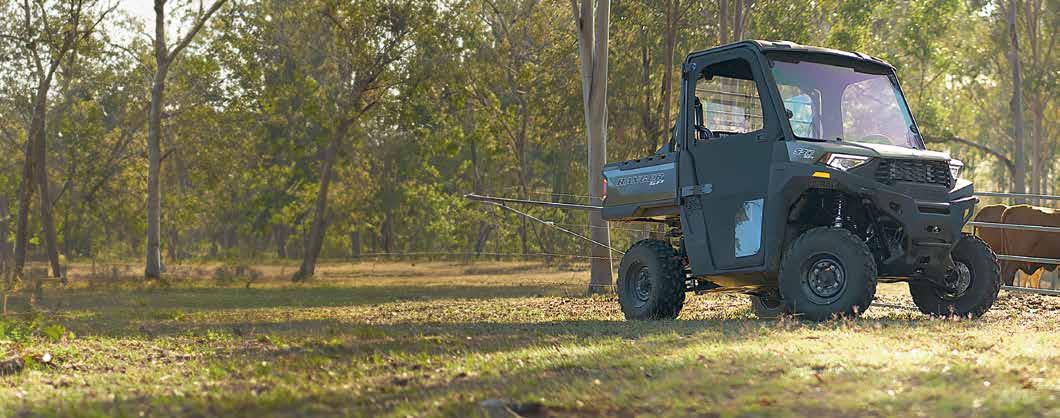
was the company’s revenue, at $560.9 million.
THE SECOND half of 2023 gave rural retailer PGG Wrightson a challenging result, but there’s still room for positivity on the horizon, according to chief executive Stephen Guerin.
The company released its half-year results last week, marking yet another softening in profit and revenue. Operating earnings before interest, taxes, depreciation, and amortisation (EBITDA) was $36.6 million, down 24%, and its net profit after tax (NPAT) slumped 40% to $12.7 million. Also down
Guerin says that the results are a reflection of the ongoing pressures felt by those on-farm.
“It’s been a tough environment and, in that context, we’ve produced a result that’s softer than in prior years, but having said that, our team have worked hard and I think they’ve done well in the context of what’s going on in the market,” Guerin told Dairy News
He says one of the biggest factors in this softer result are softer commodity returns across all parts of the primary sector.
“If we look across the sector… there’s been a bit

of positive news in the dairy sector but that’s only been in recent times, all sectors are showing returns to customers
below or at the cost of function,” Guerin says.
Also impacting the company is the flow-on effects of Cyclone Gabri-
elle for many of its North Island customers.
The storm hit New Zealand in February 2023 and Guerin says many of the retailer’s customers across the North Island are still focused on “recovery and remediation of properties”.
“That has cashflow impacts for them,” he explains.
Guerin says the third factor is the cost of funding operations. He says that high interest rates, plus the taking on of additional debt due to the impacts of the cyclone and lower commodity returns have meant farmers are taking on more costs.
However, there have
still been some highlights for the company.
“For us, we’re pleased about our improvements around our cashflow. We are still seeing customers paying their bills… and our market shares still continue to increase in our retail business,” Guerin says.
“So, they tell you we’re doing something right for the customer.”
“Of course, that doesn’t always flow through to the bottom line,” he adds.
Looking to the future, PGG Wrightson has softened its forecast from $52 million to approximately $50 million, so Guerin says that the next six months.



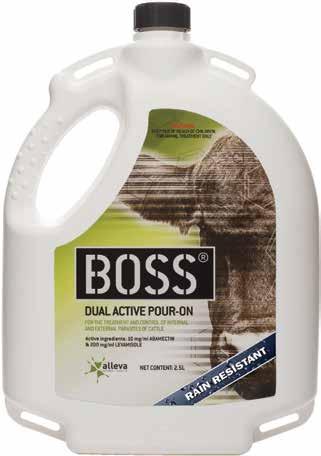
He says retail is likely to have a better six months than the previous half-year, and there is some optimism for the dairy and wool sectors and likely some stability for the red meat sector.
However, the real estate business looks to be challenged, says Guerin. He says this is the bi-product of higher interest rates and lower farmer confidence.
“There is some interest out there, but interest is not sales,” he says.
“If we think in the medium-to-long term, we are more confident in that space because of the improving commodities and good harvests,” Guerin concludes.

A MASSEY University lecturer has devised a simple No. 8 wire device to help shed some light on how to improve the persistence of plantain in dairy farm pastures.
The device Sam Wilson has come up with
to plantain by cattle pugging pastures, which in turn affects the plants regrowth ability. He says plantain has been identified as a lowcost option for dairy farmers to reduce nitrogen losses from their farms by including it in the pastures. But persistence is generally poor and it only lasts for
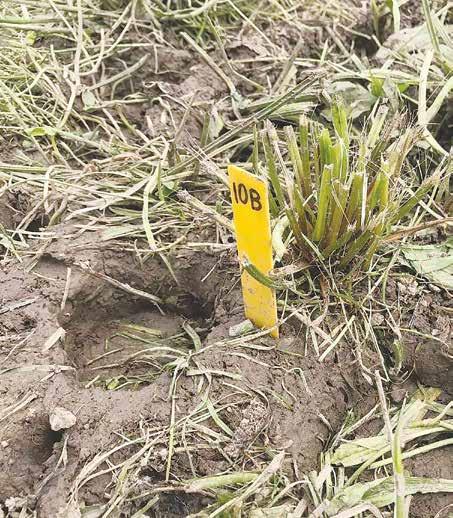


logging can temporarily slow down the growth of plantain and cause some of the plants to die, but there are other factors as well,” he told Dairy News
“One that is coming clear from my PhD studies is the shading from other pasture plants, namely rye grass, particularly through cooler times of the year when plantain is not so active. I think
there are plenty of previous studies that show that plantain is sensitive to shading,” he says.
Trying to set up trials to determine the damage caused by pugging to plantain has been challenging. Wilson says in the past a mechanical artificial hoof was manufactured, but its size and complexity meant it had limited use for field work.
The other known device was a ‘hoofinator’ which used hydraulic rams with steel plates that were forced into the soil to recreate the compaction of cow treading. But Wilson points out that a lot of the devices have been quite large, heavy, expensive and require a good amount of technical aptitude.
“As a PhD student I
“As a PhD student I had to look for an alternative, so I came up with the ‘puggo-stick’ which comprises a weighted fencepost with steel handles and footrests, so it was possible to stand on the device in a manner like a pogostick.”
had to look for an alternative, so I came up with the ‘puggo-stick’ which comprises a weighted fencepost with steel handles and footrests, so it was possible to stand on the device in a manner like a pogo-stick. It is pressed into the ground with the weight of a human operator and replicates that of a single hoof of a stationary dairy cow.
“The beauty is that it cost about $150 and took just two hours to assemble, thus meeting the criteria of being inexpensive and quick to manufacture,” he says.
But while the device may be simple in concept, using it requires some very hard work.
Wilson has some 30 plots on a Massey farm, each of which measure 2m by 2m.
The small plots are seen as the best way to effectively measure pasture damage. He says running cattle over larger plots can produce random results whereas the small plots give a much more accurate picture about the effects of pugging damage.
The ‘puggo-stick’ weighs about 25kg, and to get sufficient data, Wilson says the dis-
tance between every pug mark he made was zero – as near as possible to over-lapping. He had to stand on the device until it made an impression about 35mm down in the pasture equivalent to a cattle beasts’ hoof mark.
“I had to do this to the 30 plots and basically it took me four days of solid treading with the puggo stick. It was quite a big week and I lost three kilograms over that time,” he says.
Wilson says the treading damage caused by the puggo-stick was comparable to damage caused by cattle in previous studies which suggests that this simple inexpensive tool is an effective method of simulating cattle treading damage in pastures and could be used for future experiments.
Wilson says one of the ways to overcome the problem of plantain persistence appears to be managing the grazing of such pastures differently. He says one option is to graze to a slightly lower residual and probably grazing more often. He says it looks like plantain pasture might be ready to graze earlier than ryegrass dominated pasture.




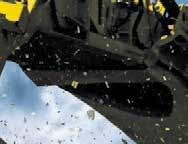



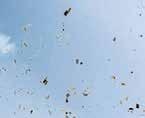




















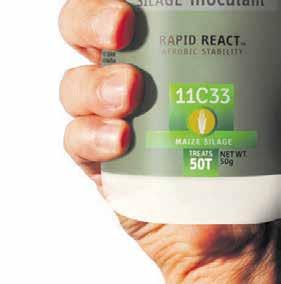




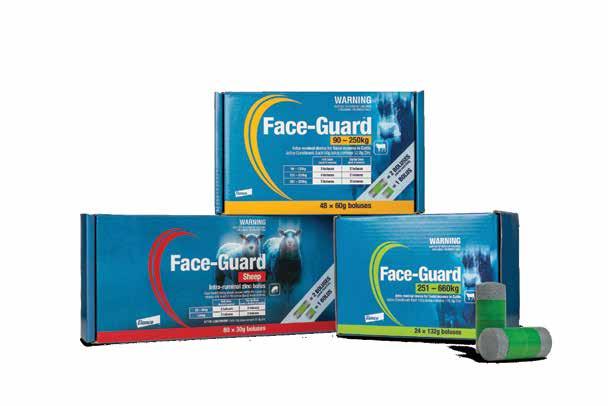
TWO DAIRY farms – one at Mangakino in the central North Island and one at Opotiki in the Eastern Bay of Plenty are the finalists in this year’s Ahuwhenua Trophy.
They are Wairarapa Moana ki Pouakani Incorporation, based in Mangakino, and Whakatōhea Māori Trust Board, based in Opotiki. They were announced at a special function at Parliament by the Minister for Māori Development, Tama Potaka. Also speaking at the event was the Minister of Agriculture Todd McClay.
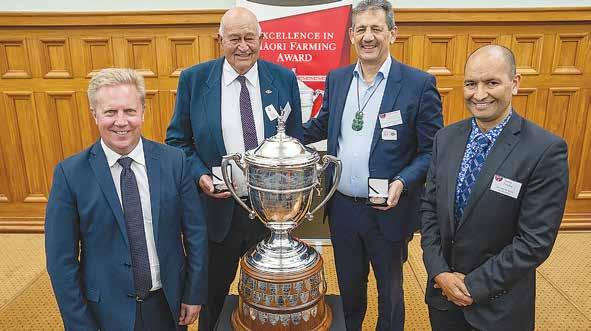
About 100 people –politicians, diplomats, Māori and agribusiness leaders and the finalists
themselves –attended the function. Potaka told the gathering how pleased he was to see such a high
WHAKATŌHEA MĀORI Trust Board’s dairy farm, named Te Riu o Kānapanapa, is a collective of five dairy farms and is located 4km south of Ōpōtiki.
The dairy platform is 218ha effective made up of 175.7ha of corpus whenua, 29ha addition to the block and 13.3ha leased. The 3-4 farming system has helped balance on farm feed and external sourcing.
The land is flat and is made up of alluvial soil, with loam, sand, stones and acidic clay on some parts of the blocks. The Waioweka river runs the length of the dairy farm and has a stop bank in place to protect the land.
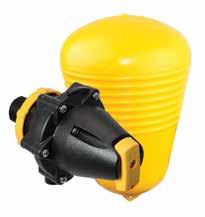
The farm winters 748 cows and milks 690 to peak. They rear stock at Whakapaupākihi, a 346ha support block 10km north of Matawai in the Gisborne catchment. This financial year they raised 190 R1 heifers, 190 dairy heifer calves and 350 beef calves. There are four permanent staff on-farm and one casual, along with two calf rearers when required.
Whakatōhea Māori Trust Board’s vision is for it to be the food bowl that feeds the world – “Ko Te Kai Hoki i Waiaua”. This vision confirms their entrepreneurial spirit, weaving together our six strategic pou: cultural identity, language and heri -
calibre of Māori dairy farms featured as finalists this year.
He says the finalists
tage, being well educated, healthy, socially connected, economically and commercially savvy.
The chair of the trust, Robert Edwards, says they are delighted to be a finalist in the competition. He says a lot of hard work from their farm manager and from the Whakatohea Trust board has gone into getting the farm to its present high standard.
Edwards says they decided about a year ago to enter the competition.
“I am very happy with what we have done and it’s a great for us just to be in the finals. I am looking forward to the outcome,” he says.
excellence in the dairy sector and, through their innovation and hard work, are inspiring the next generation of Māori farmers.
“Māori farming is a critical anchor of the Māori economy and a powerful driver of the New Zealand economy. I’m particularly proud of the way so many Māori farmers balance economic benefit with sustainable environmental protection,” he says.
Nukuhia Hadfield, chair of the Ahuwhenua Trophy Management Committee, which organises the competition, says the dairy sector, like all primary sectors, faces huge challenges such as global financial disrup-
WAIRARAPA MOANA Incorporation’s (WMI) currently consists of 12 dairy units across 4300ha plus three dairy support units comprising 1900 ha and two forestry blocks totalling 6100ha.
It aims to produce 5 million kgMS from its 12,000 cow herd and is the largest supplier to milk processor Miraka Ltd, of which it is a cornerstone shareholder.
The history of Wairarapa Moana dates to the original colonisation of Wairarapa in 1840. The local hapu had valuable landholdings and customary fishing rights for tuna in and around Lake Wairarapa. However, by the late 1800s continual pressure from farmer settlers and Crown coercion ultimately led to the hapu gifting the lake to the Crown in 1896 in exchange for other lands in the Wairarapa.
The Crown did not honour the original agreement and were not prepared to source lands locally in Wairarapa, so in 1915 with great reluctance the hapu leaders at that time accepted the land known as the Pouakani 2 Block in Mangakino.
WMI has entered one of its dairy units into the Ahuwhenua Trophy Competition, which has a milking platform of 300 hectares, milking 980 cows and producing 416,000 kgMS.
WMI chair Kingi Smiler says it’s a privilege to be in the finals. He says the WMI is a big farm but a lot of work has been down over the last 20 years and they have made steady progress and it’s great to be able to showcase some of that to the people who come to the field days. “The story about the success of Māori agriculture is slowing getting out there but it still needs a lot of work and the Ahuwhenua competition helps keep that profile out there,” he says.
tion, war, rising costs and some major markets that are taking longer than expected to recover from the Covid pandemic.
“Our dairy farmers are not immune from these challenges, but this has not deterred them from entering this year’s com-
petition,” she says.
Field days, which the public are invited to attend, will be at Wairarapa Moana on Thursday March 28 and on Thursday April 4 at Whakatohea. The winner will be announced at a function in Hamilton on May 17.


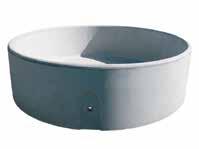
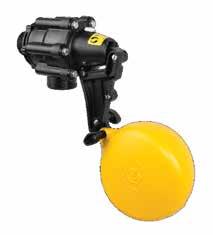

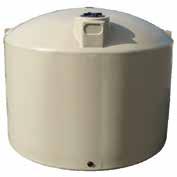
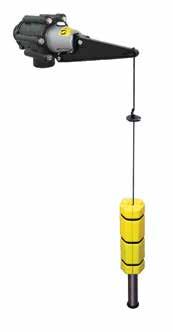
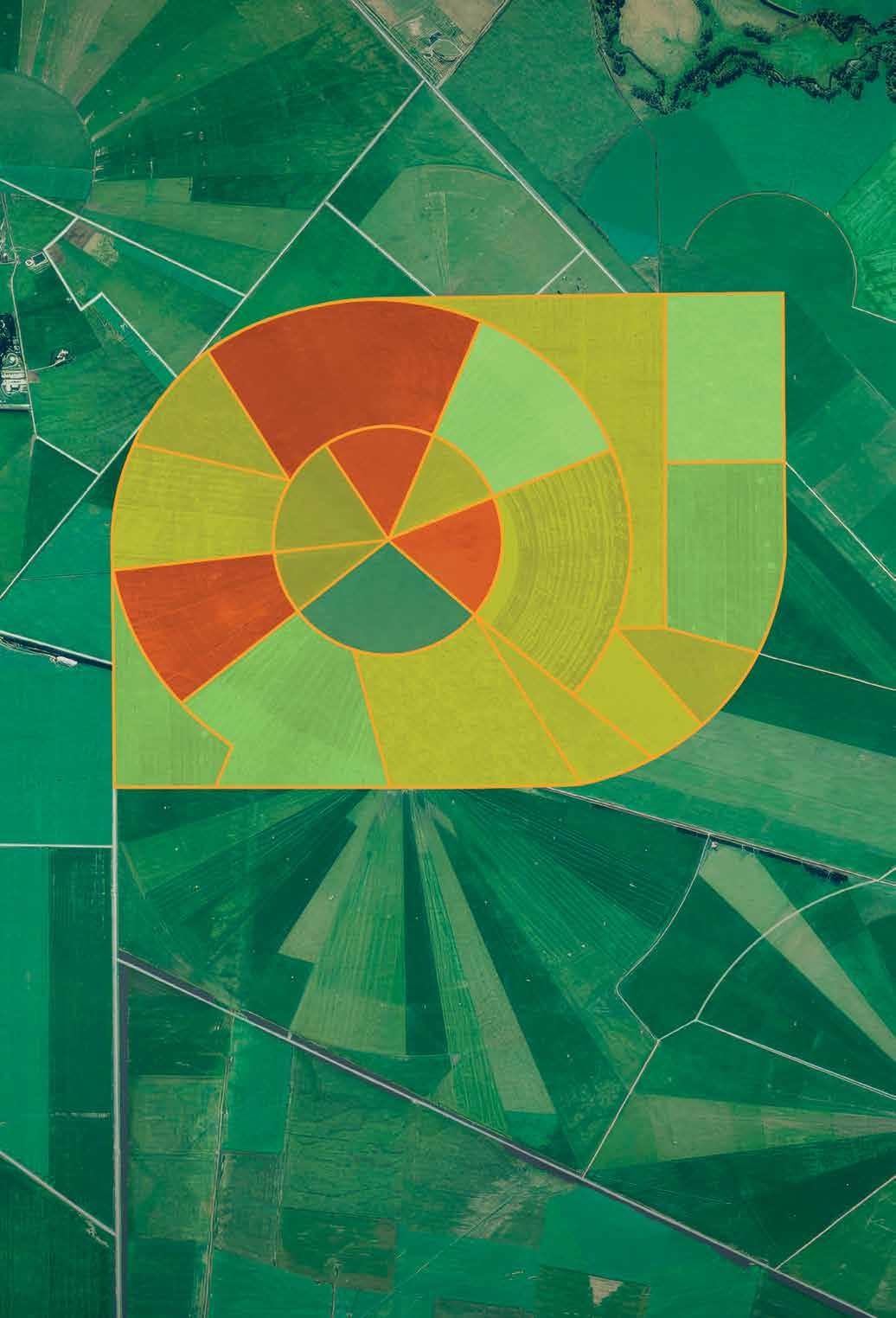
HawkEye® helps you see your whole farm in one place. It’s an accurate and cost-effective way to manage nutrients, paddock by paddock. So you spread only what you need – right where you need it.
To find out more visit www.hawkeye.farm
TO SURVIVE and thrive in this changing world, New Zealand farmers must take a new look at what resilience means to them and their farming operations, Foundation for Arable Research (FAR) chief executive Alison Stewart says.
Farming faces several challenges including economic uncertainty, extreme weather events, increasing regulation, environmental concerns and changing market demands.
As agriculture pro-
duces food and generates valuable export returns it is valuable to New Zealand, but it’s not special, she told FAR’s maize conference in Hamilton recently.
“New Zealand farmers need to get over the idea that ‘we’re special and we need to be treated in a special way’.”
New Zealand agriculture is important, but so are other sectors like tourism, manufacturing, health and education.
“There’s nobody in New Zealand saying ‘let’s
A FONTERRA staffer has become the first person from the dairy industry to win a prestigious food safety award.
Fonterra’s general manager global regulatory response and services, Andy Goodwin, received the Ministry for Primary Industries award for outstanding contribution to food safety. The award was presented to Goodwin by Vince Arbuckle, deputy director-general New Zealand Food Safety.
Goodwin is only the second person to receive the award and the first person from within the dairy industry.
“Andy’s advocacy for, and commitment to, food safety is outstanding, and we are pleased to acknowledge his important role as a food safety champion at Fonterra,” said Arbuckle after he handed Goodwin the award last week.
Goodwin works closely with MPI on food safety matters to support a thriving food economy for New Zealand and ensure the best outcomes for Kiwi businesses exporting overseas.
The NZFS Award acknowledges an individual who is an excellent and proactive advocate and has contributed beyond their role for food safety and suitability in New Zealand. Andy received the award as he is also considered an ambassador and leader for food safety and acts in New Zealand’s interests globally, having done so through building a long-term relationship with New Zealand Food Safety.
Goodwin believes that his team’s relationship with MPI is not only a strong connection to Fonterra but also about helping ensure both organisations get the best out of each other, and as a result better outcomes for New Zealand exports generally.
“Our relationship with MPI is built on trust, transparency, integrity, and proactive communication,” he said. Goodwin attributes the win to the capability of his team.

make life difficult for agriculture’.” Change in agriculture is happening across the world.
Agricultural resilience isn’t just about the ability of farms to cope, it is about their ability to transform, Stewart says.
Creating resilience is the key to being a suc-
cessful farmer.
“You may think that change is overwhelming but this maize conference has heard from farmers who have already embraced it.”
Strategies to build farm resilience include adopting climate smart practices, diversification,

financial management, embracing learning and innovation and networks and collaboration.
Climate smart practices include using drought and heat tolerant cultivars and not just focusing on yield potential, as well as implementing soil conservation measures such as no till and cover crops.
Diversification is also a way to manage risk, a consideration for maize growers focused on a single crop in continuous rotation.
“Maize creates a simple farm business, delivers economies of scale and usually generates greater profits. But, in a changing climate it can lead to greater risk and vulnerability to crop failure, fluctuating commodity prices and increasing input costs.”
Growers also need to proactively plan and understand their finances.
Embracing learning and innovation and adopting new knowledge, tools and technology is also key.
“If you are working in isolation and doing the same thing you have always done then your future will be challenging.”
Kiwis regard themselves as innovative, with a No. 8 wire mentality, but New Zealand is not embracing change as much as the rest of the world and this is a risk, Stewart says.
“If we are truly world leaders in agriculture, we need to change. World leaders never defend the status quo because they are always innovating, changing and evolving; that is what makes you
world leaders. The All Blacks found that out the hard way.
“The only way to innovate is to have networks and collaboration, sharing knowledge, resources and expertise.”
Nobody knows what the future looks like as the speed of change is so fast, Alison Stewart says. “I only know it will change and your ability to respond to change will be what determines your success.”
The conference had earlier heard from Margaret Stuart of Nestle Australasia. One of the world’s biggest food companies, Nestle, is committed to net zero greenhouse gas emissions by 2050. Sourcing ingredients represents 71.4% of its emissions, mainly coming from dairy and livestock.

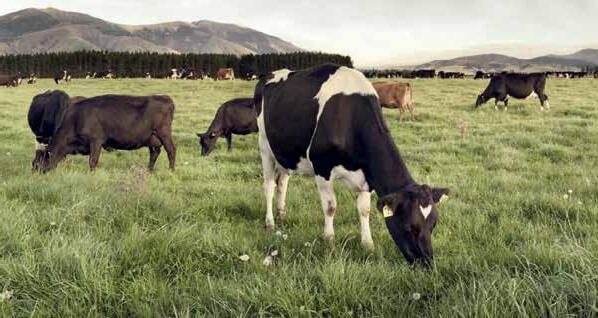




In a bubble
SENIOR MEDIA execs in this country seem blind to how they are perceived these days.
For example, Mark Jennings, Newsroom co-editor and former TV3 head of news, recently said: “There has been quite a lot of talk in the media, particularly among senior media people… whether we should all just stick together, and decide not to report him”.
The person they wanted to silence was Winston Peters, who, love or hate him, is the Deputy PM of NZ. Peters has publicly derided media who took Labour’s $55m public interest journalism handout, calling it a “bribe”. Ironically, Jennings comments about colluding to silence the Deputy PM will just reinforce the view that some media aren’t playing with a straight bat.
LAST WEEK marked the closure of one government funded entity that people had hardly heard of.
The Productivity Commission, which gets $6m in state funding annually, was given its marching orders by the new Government. In total 22 staff, including four commissioners, are out of work. Milking It reckons it’s unlikely anyone else will notice the difference when it closes.
Thirteen years ago, ACT helped give birth to the Commission. Now David Seymour says it’s time to “stop giving around $6 million a year to the Productivity Commission to produce more reports”.
That money would instead be used to set up a Ministry of Regulation to be headed by Seymour. Hopefully, taxpayers will see some real changes now.
RURAL
should take their advice from health professionals, not Greenpeace, says Federated Farmers.
The farmer lobby’s comments came as Greenpeace offers free drop-in water testing in Taranaki and Waikato. Greenpeace claims that there’s “a very real chance that nitrate contamination of drinking water in many rural areas impacted by intensive dairy is linked to cancer at lower levels than previously thought”.
Feds acknowledge that high levels of nitrates in water can cause harm, but they pull up Greenpeace on their scaremongering. The Ministry of Health has set a maximum acceptable value of 11.3mg/L for nitrate-N or 50mg/L for total nitrate in drinking water – miles above levels found in rural areas. As usual, Greenpeace don’t let facts get in the way of a good story!
have swept Europe in recent weeks.
From Paris to Brussels and from Madrid to Warsaw, thousands of farmers have taken to the city streets on their tractors demanding action on cheap supermarket prices and what they say is unfair competition from abroad. Ag ministers from across the EU pledged to do more to cut red tape and help farmers, but there’s no end in sight to the mayhem. In fact, things got a bit out of hand last week: farmers broke through a blockade in Brussels to enter the European Quarters as EU ag ministers met for a summit. In Belgium, police blockades were sprayed with cow effluent by angry farmers. Farmers are hoping that there will come a time when police would have to pick a side and hope they choose wisely.
THE GOVERNMENT is sending a clear signal to state-owned farming giant, Pamu (Landcorp) that things must change.
Like all other SOE’s, Pamu’s success and financial performance must be as profitable and efficient as comparable businesses not owned by the state. In other words, Pamu must do better and be in the top tier when it comes to performance by a diversified farming group.
The recent announcement that Pamu made a half-year net profit of $3m, compared to $15m the previous year, didn’t go down well with the new Government, which is already signalling cuts to civil servant numbers in Wellington.
SOE Minister Paul Goldsmith isn’t satisfied with Pamu’s performance, and for its part, Pamu is listening: the management and board say they look forward to receiving the letter of expectations from Goldsmith.
While the coalition Government has no agreement to sell Pamu, history shows that the thought has crossed National’s mind. In September 2017, on the eve of the general election, National announced that it would sell Pamu if re-elected. It is believed the announcement came as a surprise to many at the time, including Pamu’s board.
So, should Pamu not perform to expectations, National could have another look to offload the company that manages 360,000ha, which includes 83 companyowned farms and 27 leaseholds. There will be no shortage of buyers.
Pamu is a successful business and a large employer with 630 permanent staff and another 300 casuals during seasonal peaks. Over any 12 months, it farms 1.3 million sheep, deer and cattle.
To its credit, Pamu has performed well with net profit after tax of $33m last financial year, compared to $22m the year before.
However, the new Government wants Pamu to lift its game and deliver even better returns. Cabinet will soon sign off on a new chair for the Pamu board.
The ball with then be in Pamu’s court.
AUCKLAND SALES REPRESENTATIVE:
Publisher: Brian Hight Ph 09-307 0399
General Manager: Adam Fricker Ph 021-842 226
Head Office: Lower Ground Floor, 29 Northcroft St, Takapuna, Auckland 0622
Phone 09-307 0399.
Editor: Sudesh Kissun Ph 021-963 177
Machinery Editor: Mark Daniel Ph 021-906 723 markd@ruralnews.co.nz
Reporters: Peter Burke Ph 021-224 2184 peterb@ruralnews.co.nz
Subscriptions: Julie Beech Ph 021-190 3144
Production: Dave Ferguson Ph 027-272 5372
Becky Williams Ph 021-100 4831
Stephen Pollard Ph 021-963 166 stephenp@ruralnews.co.nz
WAIKATO SALES REPRESENTATIVE:
Lisa Wise Ph 027-369 9218 lisaw@ruralnews.co.nz
WELLINGTON SALES REPRESENTATIVE:
Ron Mackay Ph 021-453 914 ronm@ruralnews.co.nz
SOUTH ISLAND SALES REPRESENTATIVE:
Kaye Sutherland Ph 021-221 1994 kayes@ruralnews.co.nz
REDUCING GREENHOUSE gas (GHG) emissions – especially scope 3 emissions that occur on the farm – has been on the agenda of leading dairy companies for many years.
Historically, productivity gains have led to more efficient milk production and lower emissions per kilogram of milk, but more comprehensive reduction strategies are needed.
As one can’t reduce what one can’t measure, in 2010 the International Dairy Federation, the Food and Agriculture Organization of the United Nations, and the Sustainable Agriculture Initiative Platform worked together to create a harmonized carbon footprinting methodology for the global dairy sector as a first step in the industry’s emissions reduction pathway.
Most companies in the Global Dairy Top 20 – Rabobank’s annual ranking of the world’s 20 largest dairy companies by turnover – have set climate targets or made a voluntary commitment with the Science Based Targets initiative (SBTi). And more recently, companies – including the majority of the Top 20 – started turning to the SBTi’s Forest, Land and Agriculture (SBTi FLAG) guidance on target setting.
Target levels, timing, and scope can differ among companies depending on their regulatory environment, downstream buyer demands, or public pressure. In this report, we look at the GHG emissions reduction targets of the Top 10 largest dairy companies, plus some of the strategies they are using to achieve these goals.
For scope 3 emissions, several of these companies have committed to a reduction in intensity levels and/or absolute emissions in the range of 30% toward 2030.
The industry has
already taken numerous steps to stimulate GHG emissions reduction, such as determining on-farm emissions, creating sustainability programs, and more recently incentivizing farmers through result – and participationdriven premiums (“carrots”).
At the same time, “sticks” will remain part of the equation, with more agriculture and dairy-specific regulation on the way, as well as greater pressure from offtakers to reduce GHG emissions. Not meeting voluntary commitments –like SBTi targets – could have negative consequences for dairy companies going forward, such as reputational damage.
However, to reach 2030 goals and beyond, it is crucial to accelerate the adoption rate of on-farm GHG emissions reduction measures. This is because reductions from productivity and efficiency gains may begin to diminish in developed regions as we move closer to the target date.
After 2030, these targets may only become steeper and, therefore, a wider variety of onfarm mitigation levers are needed. In order to reach the targets set, a well-balanced combination of carrots and sticks is required, as companies are currently unable to reward farmers from downstream market participants’ contributions.
Expanding the financial incentives for farmers will likely require the cooperation and collaboration of participants and stakeholders in the value chain. With such participation, reducing GHG emissions in the dairy value chain in the longterm and accelerating the rate of reduction are believed to be possible.
Why is it important for dairy companies to be proactive?
Dairy companies have been aware of the need to reduce their greenhouse gas (GHG) emissions for many years.
In recent years, companies have faced more pressure from offtak-
ers, end consumers, and other stakeholders – such as NGOs, environmental groups, and even shareholders – to accelerate the reduction of GHG emissions. At the same time, they understand that more
regulation is likely and that targets will increase over time.
This has led to more companies proactively making the first moves.
• Richard Scheper is RaboResearch’s dairy analyst.
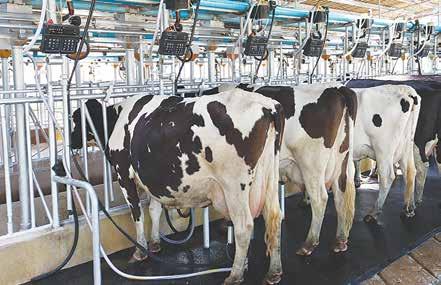





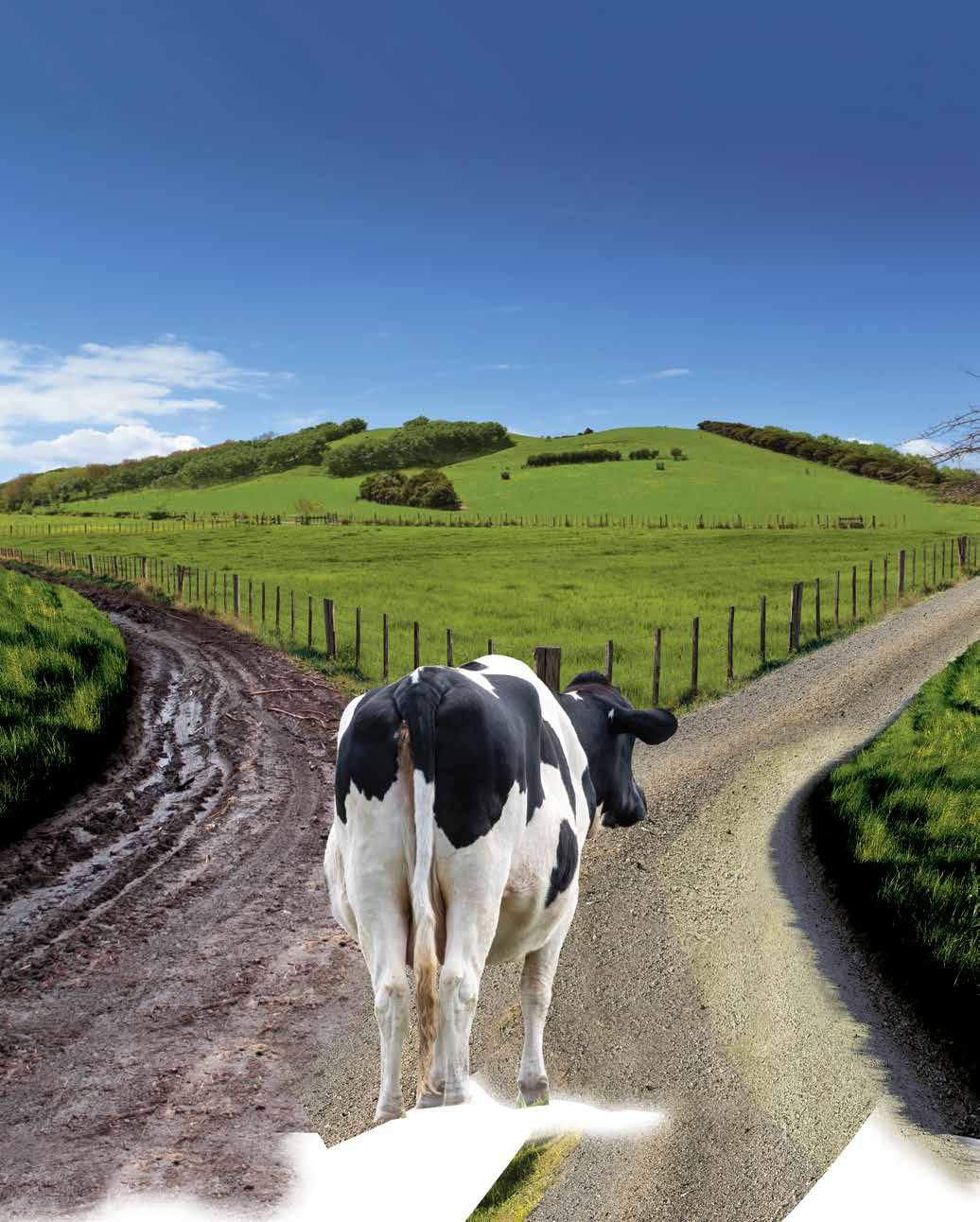
A NEW Zealand/Ireland joint research programme, launched last month, aims to better understand methane emissions from pasturebased farm systems.
The four-year programme will see researchers, students, professors and database technology experts from DairyNZ (NZ) and Ireland’s Agriculture and Food Development Authority (Teagasc), University College Cork and Irish Cattle Breeding Federation working together to quantify methane emissions from dairy cows in pasture-based systems.
DairyNZ principal scientist Jane Kay says they aim to determine the effect stage of lactation and pasture species, man-
agement and seasonal growth have on base methane emissions, and how these factors influence cows’ response to methane-reducing technologies.
“The joint programme strengthens our connection with Ireland and enables NZ to leverage current and future research. It also fits within DairyNZ’s wider research programme.
“This wider programme sees our world-leading scientists working with NZ farmers, research organisations and commercial companies to develop workable and scalable mitigation solutions that can be widely adopted on-farm to reduce emissions in a sustainable
DAIRY FARMERS’ reliance on imported palm kernel expeller (PKE) as a supplementary feed faces headwinds amid shifting consumer preferences and environmental obligations to reduce greenhouse gas emissions, says AgFirst Waikato consultant Raewyn Densley.
This will drive farmers to look for supplementary feed options closer to home, providing opportunities for domestic maize silage and feed grain growers.
“From a crop perspective and for the New Zealand arable industry this is exciting because crops like maize have much lower GHG emissions than PKE,” Densley told the Foundation for Arable Research’s maize conference in Hamilton.

and viable way.”
DairyNZ was awarded funding in 2023 for this work, as part of a pilot joint research initiative between New Zealand and Ireland.
Significant expansion in the dairy industry between 1990 and 2020 grew the national herd by 2.6 million cows to 5 million and production by 132 kgMS/cow. An extra 730,000 hectares was converted into dairying, much of this arable land in Canterbury.
This led to a massive increase in feed demand on dairy farms, from 9.3 to 23.6 million tonnes of drymatter eaten a year, driven by more cows, more hectares and more production per cow, said Densley.
“Over time, we have gone from a pasture-based dairy farm system to one that is still pasture-based, but is also quite reliant on other feed.”
About 15 to 20% of what New Zealand dairy cows eat isn’t pasture, but supplementary feed, including PKE
The programme will also develop a methane database for pasturebased systems to ensure emissions and mitigations are accurately accounted for at a farm and national
level in NZ and Ireland. Both countries face national and market targets to reduce methane.
Kiwi farmers are among the world’s most emissions-efficient.
Consumer and dairy supplier expectations are a driver for dairy farmers to continue reducing emissions, so NZ can remain competitive in the market. DairyNZ’s continued research supports that.
“Finding solutions to help farmers reduce emissions while maintaining on-farm profit remains a research priority,” Kay says.
Over the past 20 years, potential technologies to reduce methane emissions have emerged from all over the world.
(a byproduct of the palm oil extraction process), fodder beet and maize silage. Use of harvested crops like maize silage and feed barley, as well as grown supplements like fodder beet, kale and swedes, is increasing by 5.6% a year. Imported feed, particularly PKE, is increasing even more, by 9% each year.
“We think we are a pastoral dairy system and relatively self-contained, but 11 per cent of feed used to feed our cows is produced internationally.”
Globally, New Zealand is the biggest importer of PKE at 21.3%, with most coming from Indonesia and Malaysia.
This brings sustainability issues, Densley said.

DairyNZ is focused on potential technologies that fit within NZ’s pasture-based systems, such as early life intervention, which involves feeding a natural product to young calves, with the aim of reducing methane emissions for the animal’s lifetime.
“This is an attractive delivery mechanism for NZ, as it’s cost-effective and occurs well before product processing, such as milk harvesting,” Kay says.
Most of the research on methane mitigation technologies is completed at Lye Farm, one of DairyNZ’s two Waikato research farms.
Lye and Scott Farms are an important sector resource, enabling scien-
Globally there is a western consumer trend away from palm oil, with a lot of big companies backing research into alternatives. She said some consumers are turning away from dairy products made from cows fed PKE, with Fonterra placing limits on PKE use by its milk suppliers.
Consumers want milk products with a low GHG footprint but PKE has issues with deforestation, methane production from palm oil extraction and higher carbon losses than pasture, maize silage and grain.
“While New Zealand farmers are just getting their head around their GHG obligations from a government perspective, the reality is that the world has moved on. Consumers are not just interested in on-farm losses
tists to carry out pasture, animal, and farm systems trials under relevant conditions. This ensures the technologies and tools developed are practical and can be widely adopted into different farm systems.
Farmers are involved in all the projects, to provide their thoughts and advice on opportunities or barriers for adoption of these solutions into NZ farm systems.
“We’re excited about our continued work alongside farmers and other sector and research organisations to develop mitigation solutions for our unique pasture-based farm systems – and to get ahead of the environmental challenges farmers face,” Kay says.
they are also interested in embedded losses associated with farm inputs,” Raewyn Densley says.
Climate change means farmers will continue to need more than just pasture to sustain their herds but there is likely to be a move away from internationally-produced feeds.
While buying in locally-produced crops will be the preferred option for some farmers, others may investigate dropping their stocking rate and cropping on farm.
Modelling for an AgFirst study Densley was involved with, funded by Our Land and Water, showed that a North Island dairy farm system using homegrown feed was generally more profitable than one with imported feed.
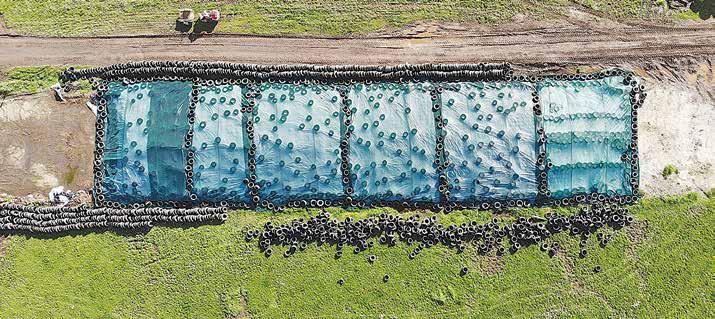

DAIRYNZ’S PEOPLE
Expo events are back.
A series of day-long events planned throughout the country this month is aimed at providing dairy farmers with unique opportunities to better understand workforce dynamics, and ideas on actions they can take to find and keep great people.
DairyNZ and Dairy Women’s Network are partnering to deliver events in Northland, Bay of Plenty, ManawatuWhanganui and Southland regions.
DairyNZ lead advisor for people, Jane Muir, will be master of ceremonies (MC) for the events. She encourages farmers to join the People Expo events to hear about what is needed to tackle the big employment issues on farm.
“Supporting great
workplaces and people on farm is critical. We want to support farmers with credible evidence and practical solutions that help them find and keep the staff they want,” says Muir.
“These People Expos are opportunities to con-
nect with other farmers facing similar challenges, while guest speakers and workshops provide inspiration and practical tips you can apply with your farm team.
“I encourage farmers to attend, as I think everyone will take some-

thing positive away from these events that is directly applicable to their farm.”
A range of guest speakers headline the People Expos including Waikato dairy farm owners Sue and David Fish, focusing on their
ethos of teamwork, and Chris Parsons, chief commercial officer of MyFarm, sharing his story of teamwork and leadership, in a varied career including time in the NZ Defence Force. Guest speaker and economist Shamubeel
Eaqub will discuss global, national, and regional economic and workforce changes and outline why farm businesses must act differently and look in new places to stay successful.
“The global and political backdrop for farmers
is increasingly unpredictable, affecting interest rates, dairy price, and the input costs of critical things, like feed and fertiliser,” says Eaqub.
“This makes businesses and farming more unpredictable, and we cannot influence these things. However, we can influence how we lead and manage our businesses. Part of this is around our most important resource, our people, who are in short supply but demanded from every sector. I’m looking forward to sharing practical ways for us to think differently as leaders, and to act differently as a sector, along with having insightful discussions with farmers.”
The People Expos are free for dairy farmers and their team to attend.
@dairy_news

LEPTOSPIROSIS IS widespread on New Zealand livestock farms and a webinar hosted by Zoetis on March 19 will provide resources and insights into understanding and preventing the disease.
Recent findings indicate that 97% of sheep farms, 97% of beef farms and 76% of deer farms have Leptospirosis present. Humans primarily catch Leptospirosis from exposure to infected livestock or wild animals, so prevention of Leptospirosis in animals is central to protecting the health of both humans and animals.
The early symptoms of Leptospirosis often seem harmless enough, but the disease can cause severe illness, including liver damage, kidney failure, meningitis, heart failure, lung inflammation and pregnancy loss.
As a bacterial dis-
Date: Tuesday 19th
March, 2024
Time: 12pm – 1pm
Registrations: https:// zoetis.zoom.us/webinar/ register/WN_zllwPwUSoav7fJTelnJXQ
ease which affects both humans and animals (including farmed livestock), the effects of Leptospirosis on rural communities can be severe and wide-ranging.
Last year saw the largest number of people diagnosed with Leptospirosis for 20 years, which highlights the urgent need for education on safeguarding both human and animal health.
With over half of people diagnosed with Leptospirosis hospitalised and the detrimental effects on the health

of livestock reported to be on the rise, Zoetis are set to host a webinar on Tuesday, 19 March at 12pm.
Hosted by Laura Beasley, veterinarian at Zoetis, the webinar will feature rural specialists including: Matt Wyeth, chief executive, chairman and general shepherd at
Spring Valley Enterprises; Tim Scotland, director at Southern Rangitikei Veterinary Services, a production animal veterinarian with a specialisation in dairy cattle; and Jackie Benschop, Professor of Veterinary Public Health.
Wyeth will share his personal experience with
Leptospirosis, underscoring the critical importance of awareness and prevention.
“Really I was quite lucky that it was a hospital used to treating rural cases and they picked it up that I most likely had Lepto.”
Intensive treatment with antibiotics and an
eight day stay in hospital were needed before he could return home, but recovery was not rapid.
“It was really six months before I could get back into doing things on the farm properly.
“Even today, three years later, I can occasionally feel the aftereffects if I am getting
A VACCINE, claimed to be the first specific product against Streptococcus uberis, the most common cause of environmental mastitis in New Zealand, was launched here last month.
UBAC, developed by leading Spanish pharmaceutical manufacturer Hipra, is now available exclusively from Agilis Vet Ltd. This follows a successful release in Europe in 2018 across 50 countries.
At the recent launch, Dr Marga Penelas, global product manager at HIPRA, spoke about the global increase in the incidence of mastitis caused by Streptococcus uberis and the frustration caused by the lack of response to conventional treatments.
It is an exciting step towards reducing the need to treat mas-
titis with antibiotics and working towards maximising milk production, he said.
Agilis Vet general manager Ben Lee says those present at the launch showed their enthusiasm for the idea of having new tools for the control of this pathogen.
“They also understood that with the launch of UBAC and the consolidation of STARTVAC – a mastitis vaccine registered in NZ for Staphlococcus aureus – Agilis affirms its commitment to new tools for the control and prevention of mastitis in dairy cows.
“Furthermore, this product – like others in our portfolio –supports our determination to move animal health towards preventative care as good standard practice.”
a bit run down,” says Wyeth.
Scotland brings a wealth of real-world experience as a vet dealing with Leptospirosis outbreaks among livestock in the Lower North Island. As a veterinarian and epidemiologist, Benschop has become a renowned leader of Leptospirosis research within New Zealand and will highlight her knowledge, gained from her team’s research, as well as their ongoing efforts to understand this disease.
Farmers, veterinarians and anyone interested in the well-being of livestock and humans are encouraged to join this informative webinar to learn more about Leptospirosis, its impact, early symptoms, the importance of prompt diagnosis, and the potential severe consequences for humans and stock.







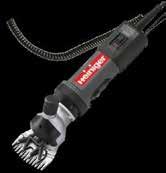

RECENTLY GAINING
traction in New Zealand, since being founded as recently as 2019, Segway Powersports is a subsidiary of the SegwayNinebot Group, with its products being sold in more than 100 countries around the world.
Offering an extensive range of ATV and UTVs that start life at the company’s R&D centre in Seattle USA, machines are manufactured in China with the key focus on affordability, quality and safety – while incorporating the latest technology and good power delivery, backed by a 2-year comprehensive warranty.
On the safety front, one standout feature is the Telematics Box (T-BOX), which adds extra peace of mind by automatically alerting an emergency contact in the event of a serious collision or rollover. Additionally, the vehicles feature a smartphone app that allows remote activation, customisable driving settings, and real-time monitoring of various parameters like mileage and horsepower.


Taking a brief look at the extensive ranges, the Snarler AT5 and AT6 ATVs offer a choice
of single or dual seat options, in either a short or long wheelbase and switchable
2W or 4WD. The AT6 is aimed at those wanting a little more power with its single cylin-
der 570cc motor offering 44hp/48Nm compared to the AT5s, 499cc still delivering a credible 39hp/44Nm.
Both machines are fitted with a stepless CVT transmission, multiple driving modes and front and rear diff locks. Dependent on model, payloads are 270kg with towing capacity ranges from 400 to 612kg, with
disc brakes acting on 12 or 14-inch wheel set ups fitted with 24 or 25-inch tyres. For ease of use, some models are fitted with electronic power steering (EPS), with three settings and all models are fitted with a front mounted 1130kg capacity winch.
For increased load capacity and versatility, the Fugleman UT10
UTV features a 1000cc engine delivering 105hp and 95Nm torque, alongside the option for 3 or 6-seat. With a load capacity of 680kg and a tow rating of 1134kg, the UT10 is obviously well suited to heavy-duty tasks around the farm, with the EPS with multiple driving modes and switchable 2WD/4WD making things easier for the operator.


THE SAYING goes ‘if it ain’t broke -don’t fix it’, so it’s no surprise to see an old favourite in the shape of the Honda CT125 still doing it like it always did, but with a revamp from the iconic CT110 that started things.
The CT125 boasts a 125cc, single cylinder, 4-stroke engine, electric and kick start, ABS, LED lighting and a digital display. The farm kit adds off-road tyres, farm gearing (chain & sprocket kit), front carry rack and handlebar protection.
Many farmers have come to realise that ATVs and UTVs have a place on the property, but when it is just moving people around the property, a two-wheeler really fits the bill.
The CT 125 with its step-through frame design makes for easy access, especially for those vertically challenged workers, has good carrying capacity, can handle the tough stuff and importantly is road registerable.
Featuring a 4-speed transmission and simple chain final drive, the CT 125 is equipped with single 220mm disc brake up front and a 190mm
unit at the rear for excellent stopping, while the front unit is also equipped with ABS for increased safety.
The chassis has been designed to adapt to all types of situations and a wide variety of riders, featuring an increased wheelbase that makes it nimble, easily controlled and complemented with an 800mm seat height and upswept handlebars.
Travelling comfort and cornering stability is taken care of by telescopic front forks and twin rear shock absorbers, offering 110mm of travel up front, so easily adapting to any uneven surfaces or hollows.
Paint coating has been applied to the steel rims and stainless-steel spokes are fitted on both front and rear wheels. The front and rear tyres are 80/90-17 semi-block pattern with the focus of attaining a balanced performance that ensures the safety of everyday riding around town as well as weekend touring on gravel roads and, of course, they are interchangeable.
All lighting on the CT125 is LED which makes them energy saving and ultra-durable. The large square indicators are a modern take on the original style CT design.



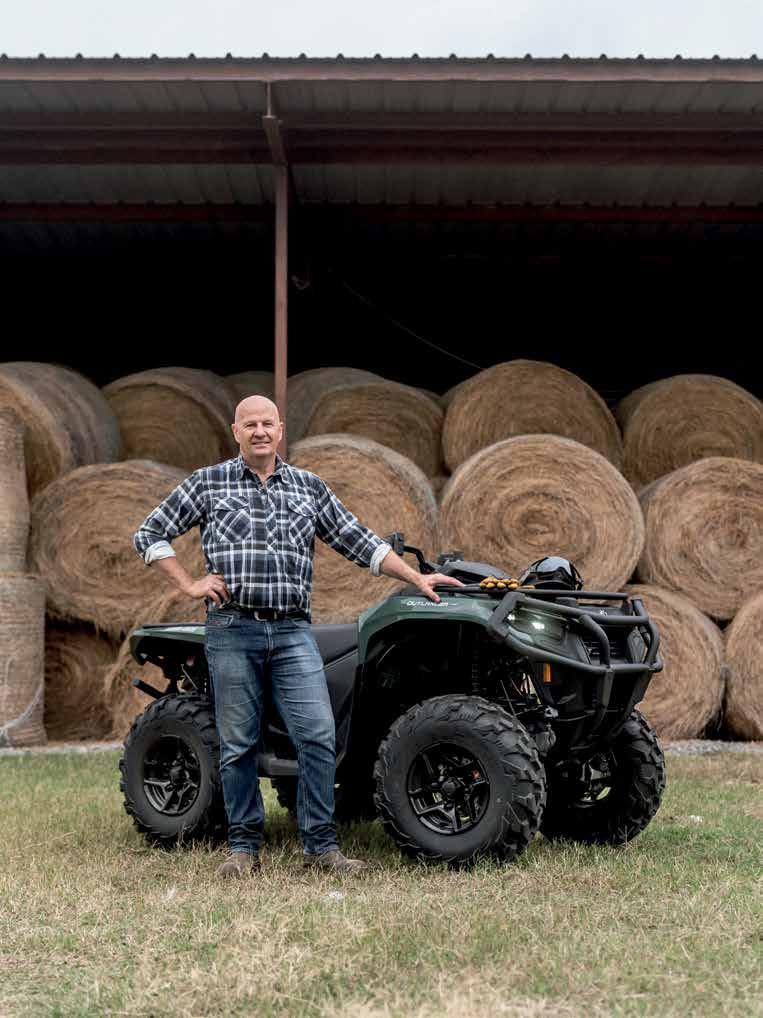
THE DR200 Trojan farm two-wheeler motorcycle was introduced over 28 years ago, when the engi-
neering team at Suzuki New Zealand Ltd first set about making a purposebuilt farm bike for our unique conditions.
Starting with the already robust DR200 trail bike, and listening
to the needs of farmers, Suzuki NZ custom built a list of accessories then packaged the bike and returned it to Japan for manufacture.
Since that introduction, the Trojan – now


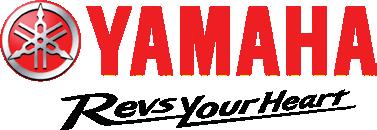

called the DR 200SE –has had several colour changes. Today it’s a simple black or white. There have been many minor model changes but underneath the Trojan is still the farm workhorse its predecessors were.
Down to on-farm practicalities, one key feature on the “DR 2Hundy” as it’s affectionately known, is the large halogen headlight, a real bonus for dairy farmers with an early morning start. It also features the popular aluminium handlebar protectors, which protect the controls if the bike is dropped or pushed over by stock, but has also saved a few knuckles along the way.
Being built in Japan means a quality construction and the use of components that ensure a long service life. For instance, the exhaust header pipe is stainless steel, while the four-stoke motor has an oil cooler and oil filter, meaning engine problems are a rare occurrence. Dual side stands make parking up a breeze when its soft underfoot, and surefooted traction is deliv-
ered by Bridgestone knobbly tyres front and rear.
Looking at general specifications, the four stroke, single-overhead cam engine is 200cc, fuelled by a 13-litre tank and mated to a 5-speed transmission that is operated via a quick action rack and pinion clutch for light, yet positive actuation.
Tipping the scales at 132kg, the set up sees twin telescopic forks up front and a single rear shock, complemented by 21-inch front and 18-inch rear wheels to deliver an 850mm seat height.
Practical considerations include extended front and rear mudflaps, a large rear carrier that is complemented by a dualpurpose headlamp protector and small carrier frame.
Low gearing makes the DR200 very controllable at low speeds, avoiding stalling or heavy clutch use, while maintenance is kept to a minimum by using a quality “O” ring chain carried in a fully enclosed, sealed chaincase.
www.suzuki.co.nz

“This
WHEN IT comes to alternative fuels for industrial and agricultural use, current electric technology means that the size of a battery will run to many tonnes to achieve a day’s meaningful work.
This has led to developers favouring methane power or more recently hydrogen.
Early hydrogen research has centred around using hydrogen cells to produce an electrical current, but more recently JCB has come to the party with its own engine design that uses the hydrogen gas mixed with air.
The company says that using a fuel-air mix and changing the engine design helps to reduce nitrogen oxide (NOx)
emissions.
This has been achieved by reducing the temperature and compression ratio of the com-

pany’s hydrogen engine, thereby eliminating NOx production completely, so removing the need for any exhaust gas treatment, making for a simpler installation and reducing costs.
The reduction in compression ratio means there is a need for a spark ignition system, making
the new engine similar to a petrol engine, which will be something of a culture shock to current operators of offroad vehicles. JCB already has prototype off-road machines running in the real world and is refining its engine, which is based on tried and trusted technology.
While the JCB solution suggests a total rethink of how an internal combustion engine works, German company Bosch suggests that it can bring hydrogen to existing diesel engines with the use of purposed designed injectors.
The company suggests that the biggest obstacle
leader in hay mower sales by 2027.
SINCE ITS arrival in New Zealand, Polish mower manufacturer Samasz, currently celebrating 40 years in business, has carved a niche with its highend butterfly style triple set-ups.
The company has now identified NZ as one of their Top 10 countries for growth and set their distributor FarmShop the lofty target of market
To achieve this target, FarmShop – which has qualified technicians recently trained at Samasz HQ in Poland – is rolling out a nationwide team service agents and when customers commit to an annual servicing programme, their warranty will increase from two to three years.
With a presence in more than 70 countries, and having built more than 160,000 mowers produced since 1984, Samasz works closely with its
distributors and end users to customise mowers to suit local conditions. Examples include stone-proof knife holders, replaceable stone protectors, and the development of thicker spur gears with bevelled edges to reduce maintenance costs.
Featuring very high blade tip speeds, an important factor in mower performance as it provides a cleaner and faster cut, the Samasz quickchange blades are now longer than their initial design, meaning a closer
cut with no striping.
to direct hydrogen injection is a lack of lubrication within the injector that diesel fuel provides in a conventional system, a key consideration given that an injector may operate around a billion times or more over the life of an engine.
The company claims that it has overcome this
Attention to detail sees a 5-stage paint process that sees every part shot blasted, rust treated and given two coats of electrophoretic paint for longer life and increased durability.
For contractor Steve Wood from Dargaville, who bought a set of KDD941 triples in July 2019, he has mown more than 10,000 hectares, the given its current condition, hopes to get another 10,000 hectares through the machine.


problem through careful design of the injector and advanced coating technologies, granting the components a life comparable to that of existing items. By doing so, the fundamental structure of the engine, as well as the fuel, air-supply, and exhaust systems already in use on existing engines, can still be used on hydrogen powered variants.
Jan-Oliver Rohrl, executive vice-president at Bosch, responsible for commercial vehicle powertrains, said, “It allows us to maintain large parts of our value. This new technology does not displace Bosch’s interest in the low-pressure systems it already manufactures, and it will continue to offer these products for converting existing ICE engines to hydrogen power.”
“This is our go-to mower; it runs daily and deals with very rough acres. I’ve seen it run over many things that cockies have left in the paddocks, fence posts and so on, yet we’ve had nothing go wrong – it’s solid,” says Steve.
“Before we bought it, I made sure the parts would be available: gearbox bits, spools, etc I even bought parts, but they’re still sitting in the shed.”
Visit FarmShop at Central District Field Days on Site W66.




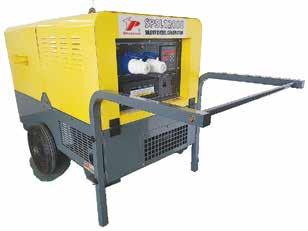

Make sure Tracesure® and Copasure® are on the tip of your tongue when needing improved growth rates and overall health for all ages of cattle, sheep and deer.
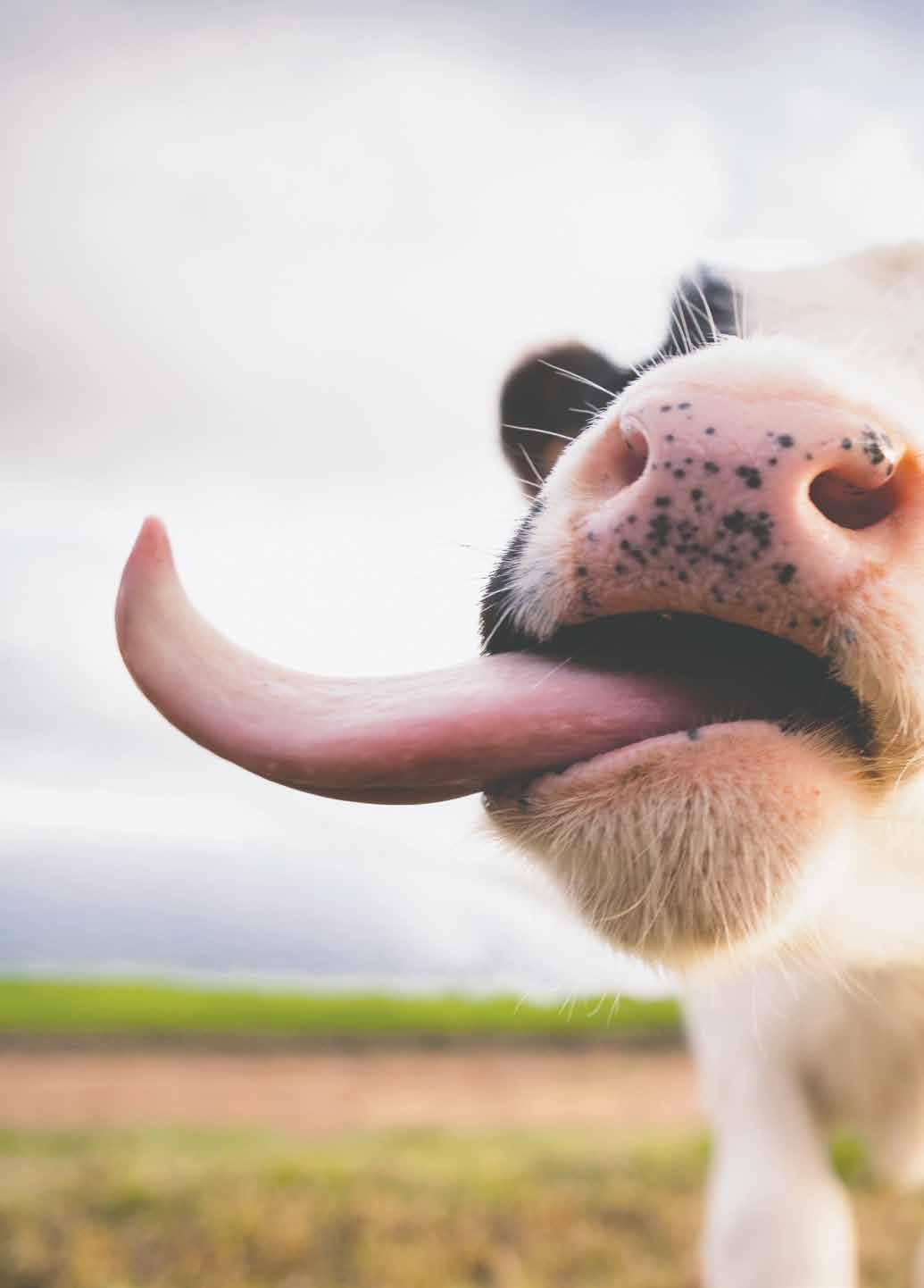

“We get continual great feedback from our graziers on how well weaned calves transition when Tracesure is used in newly weaned calves off to grazing. Calves and young stock transition to their new environments with less risk of Yersinia, less ill-thrift, recover faster from illness and provide some incredible mating results to name a few of the benefits seen”.
Kelly Andrews, Te Awamutu Vet

